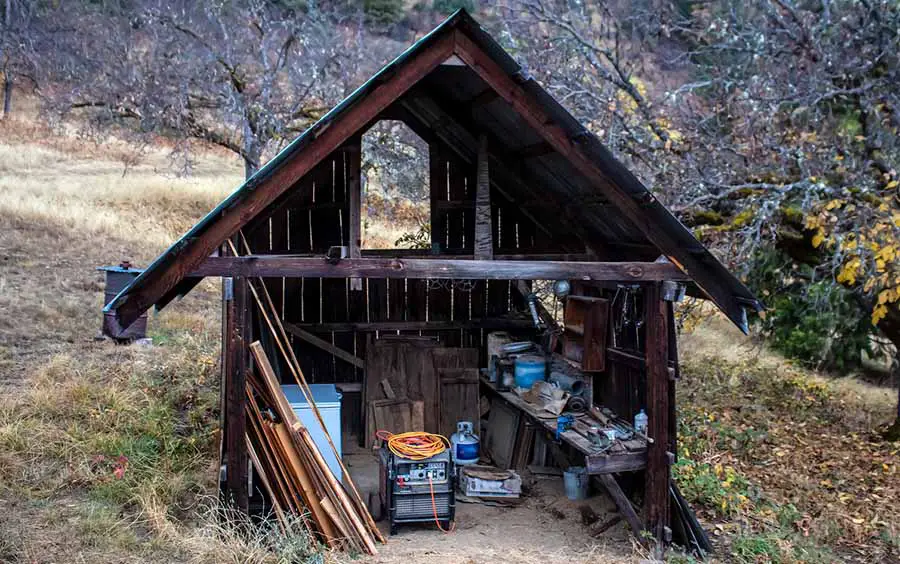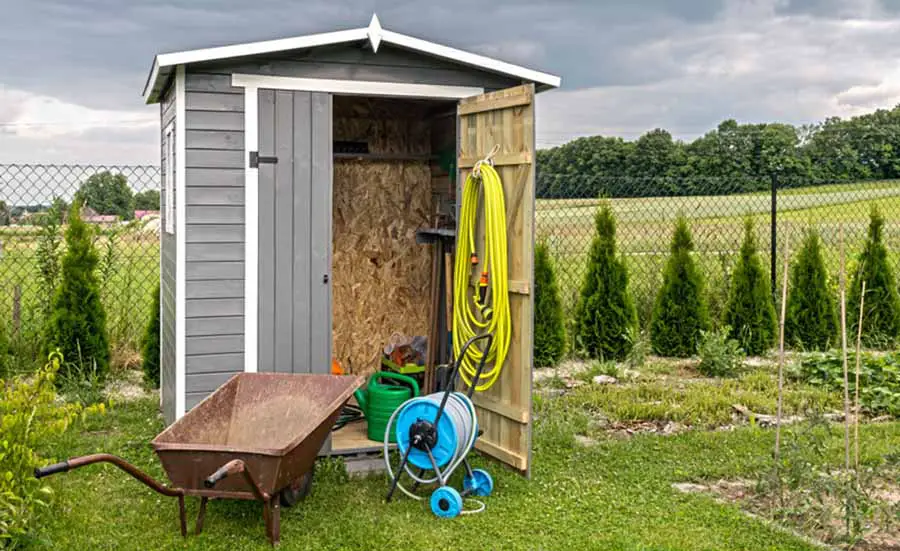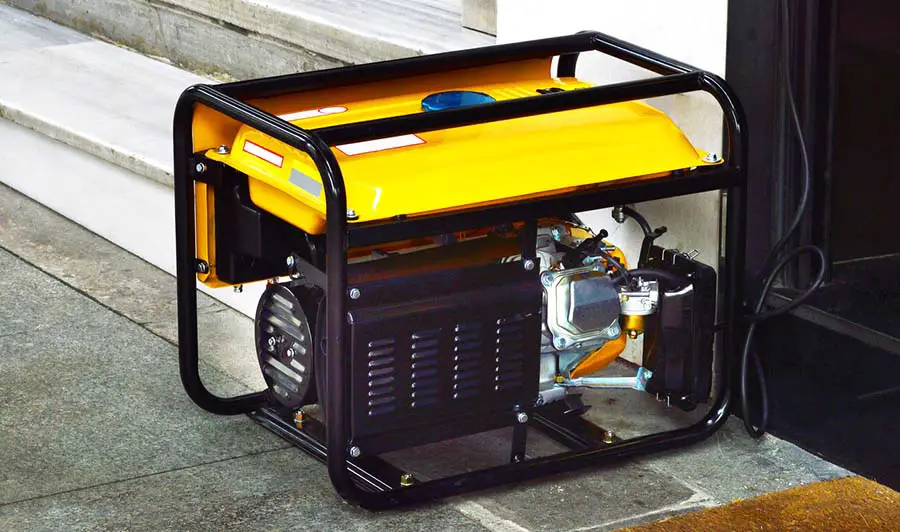
When you finally have the time to install your generator after getting everything ready and unloading it from the truck. Now you need to choose a good location to start installing it, which is why many people may choose their unused garden sheds. But should you even run a generator inside a shed?
Running a generator inside an enclosed space, including a shed, is extremely dangerous due to harmful emissions and a high fire risk. If you want to run a generator inside a shed, you must convert the space by building a base for the generator, emptying the area, and adding additional ventilation.
Even if you can build the perfect shed for your generator, it is best to buy an enclosure instead. Understanding why you cannot run a generator inside a secure building, how to do it properly, and what to avoid will save you from years of headaches.
Why You Should Never Run a Generator Inside a Shed
There are two severe and significant reasons you cannot run a generator inside a shed and one that few people think about. While, in principle, the idea of running a generator inside a space that is already safe and clean seems simple, the truth is that it is rarely something that is allowed.
You need to properly understand each of these reasons before deciding to install your generator inside a shed. Many ‘Do-it-yourself’ enthusiasts end up making mistakes that they regret later on that can easily cost hundreds of thousands to fix or cannot be fixed in the worst cases.
Exposure to Dangerous Fumes
To put it mildly, nothing that comes out of a generator is good for the planet or for humans to be breathing in. The gases exhausted can be routed outside, but even one small leak in the piping system can quickly fill a room with too much CO2 to even walk into.
This is the hidden gas and the impossible to detect killer that has killed and seriously injured thousands across the years. Even with a CO2 detector, you can be in danger of getting poisoned before you even know what gas is in the room you need to enter to shut down the generator.
Fire Risks
The generator will get extremely hot while running, usually relying on the passive cooling provided by the wind to control itself. Inside a shed, generators can heat up quite fast, to the point where any flammable materials touching the machine can spontaneously combust.
It can be pretty simple to assume that a garden shed won’t catch on fire, but most sheds are not built to handle the heat put out by the generators. The more you are running the system, the higher the chances that something goes wrong and you end up with a pile of burnt ash.
Issues with Insurance
Few people consider the ramifications of their decisions in home design and improvement, especially regarding insurance. Often much stricter regulations from your insurance provider overrule state-level regulations.
If your generator causes damage to your shed, your home, or even your health and insurance provider might decide not to payout. This would be a good reason for the company to say that you did not follow the regulations set out by the contract you have signed with them, causing problems.
How Do You Convert a Shed Into a Dedicated Generator House?

As much as we would like to have everyone follow the rules and regulations, sometimes you may need to improvise or think outside the box. Building a dedicated shed for a generator is not entirely unheard of. However, the amount of work and research needed can deliver little return on cost.
You must find a good combination and balance to ensure that everything goes well, with a large majority of sheds being either too large, too small, or from the wrong material. Before building the generator shed, we have eight things you need to know that will keep you in regulation.
1. Choose a Shed
If you don’t already have a shed, you must choose one that will fit your generator, preferably one that leaves around half a foot of space around it. This will ensure that the generator sides are not directly in contact with the shed and will not melt the sides.
Your generator should preferably be plastic, which is the same material that many sheds are constructed using. Plastic will melt long before it spontaneously combusts, creating a safety system if the cooling solution for the generator fails.
2. Build a Base
In most countries, it is regulation that any generator installed permanently should have a solid concrete base. Your shed must have a solid base onto which you can bolt it and the generator to ensure that neither moves around during operation or high winds.
This is where the process starts, and you should buy your shed first before building the base, while those who already have sheds will have to dismantle it. Usually, garden sheds used for tools and equipment will not have a solid floor, and you must heavily modify it for generators.
3. Remove Everything Else
Before installing the shed, you must remove some parts before it can be built around the generator. Most bolts, locks, and ventilation equipment will not be adequate for a generator, so it’s best to upgrade these things as soon as possible.
Often, garden sheds will have shelving in them or, if old, will already have equipment that you must remove for the generator to be unobstructed. Some sheds even have internal wiring or vents that would leave the generator open to damage from some elements that you may want to close.
4. Make Sure Everything Is to Regulation
You must discuss this with both your local municipality and your insurance, having the proper regulations to base everything you will be doing next on. Some states require that the shed be fully collapsible around the generator, while others require extensive vents if enclosed.
You may find that some stricter states don’t allow you to use sheds as enclosures and instead require you to buy generator covers specifically. As you move around the world, you will find many strange regulations for generators and how you must keep them.
5. Install Locks On All the Doors
It is always a good practice to install locks that keep your generator safe and secure on all the possible doors in your shed. Not only will this prevent vandalism, but some people have reported that the fuel in their generators was stolen when not appropriately secured behind lock and key.
Further, your household is safer when no small children can accidentally get their hands stuck in the generator. Often, the injuries that a generator can cause are simply because inexperienced or unaware people have access to the generator.
6. Install Proper Ventilation
It is essential to have at least one giant fan constantly providing fresh air to the system when running a generator inside a shed. You should directly route the exhaust to the outside of the shed, with the fan providing fresh air for the intake and cooling the system.
To ensure everything is covered, people often build both push and pull fan systems over their generator shed system. This creates a forced flow of air that induces a proper positive and negative flow of air over the entire generator instead of relying on the positive pressure from one fan.
7. Mark the Shed
The last step to installing your generator is to make it clear to those around you what exactly is inside it. Usually, with a high voltage sticker or a sign that says generator, this serves simply to people away from accessing the generator without being careful.
Many homeowners who install their generators prefer to have no stickers or signs marking where the generator is. However, this is usually against regulations as the wires, the fuel, and the sound from the generator are all dangerous and can cause harm that may make you liable.
What Kind of Sheds Can Be Used for Running a Generator?

The best shed for a generator is made from plastic or thoroughly treated wood. It must have collapsible walls on at least two sides, offer space for ventilation, and not be so close to the sides of the machine that you cannot access every part.
Further, you should waterproof and seal the shed if needed and possible. Many generator owners forget that they will not be using their machines for a long time, with animals and bugs naturally loving the closed hot space that the shed can provide.
While there are some custom-built sheds made from treated wood that can perfectly house your generator, these are usually quite expensive. Further, wood or metal are more likely to sustain damage as the generator stays unused and the materials become weathered.
Why Is No One Installing Generators In Sheds?
Sheds are much more expensive to buy new and require heavy modification before you can use them for your generator. Buying a dedicated generator cover is a lot more efficient, less expensive, and safer than trying to modify a normal garden shed for your generator.
Larger sheds that can comfortably fit the generator, the gardening equipment, and everything else you don’t want to see is too dangerous. These sheds have little to no ventilation and fill with hazardous carbon monoxide once the generator runs inside.
Sheds are perfect for generators if you have absolutely no other choice, but the work required has made many people look for other solutions. The same store that you are buying the generator from will be able to offer you a proper generator cover to keep your machine clean and safe throughout the year.
How Long Can a Generator Be Run Inside a Shed?
If the shed has been purpose-built and modified, you can run your generator almost indefinitely inside it. However, you should not run a generator at all in an unprepared shed. The heat, gases, and lack of oxygen will cause damage to you and the system.
Many homeowners make this mistake when installing their first generator, ending up either being fined thousands of dollars or becoming severely sick. It is always best to have your generator in a housing that has been built for it; just putting it in something that you hope will work is not a good option.
We recommend that you research the housings available for your generator, while we recommend running a portable generator outside at all times. The benefit of a portable generator is that you can move it back indoors when you are no longer running it.
What Is The Difference Between a Shed and a Housing?
A shed can be almost anything you have in your garden, usually dedicated to tools or a garden workshop. Sheds can be made out of wood and be large enough for you to stand and work in, or so small that you can lift the lid and only store a few pieces of equipment in them.
Dedicated housings for generators precisely to fit around the machine and protect the elements. Company or third parties usually make generator housings to cover many generators, but you rarely use them for anything other than storing your generator.
When compared directly to each other, housing will have the ventilation and protection for the generator, while a shed will need heavy modification to work correctly. Most people use a shed for their generator because housing may not be available or needs heavy modifications to work correctly.
Why Are There Generators Kept In Full-Sized Sheds?
When you keep a generator in a full-sized shed or garage, it is usually a portable generator; the owner will move it to an open space before using it. Any shed or garage large enough can be used to store the generator when it is not in operation, assuming that you use the generator regularly.
The confusion surrounding this is why many people will hear that running a generator inside a building is excellent. People are usually unaware that the generators they see inside buildings are generally only there for storage and not running indoors.
More adventurous and capable people can build custom additions to the outside of their sheds for their generators. Looking at these, you will find that the building usually has an addition. The generator in its housing where it is safe from rain, but not always the wind.
Conclusion
In theory, running a generator inside a shed, any shed, is a good idea as it offers protection and safety for the machine. However, it is never safe to run any generator inside an enclosed space, and many people quickly learn that it is not safe to have the generator in a shed.
Please remember that none of the gases that a generator makes is safe for humans to breathe, killing many throughout the years.

